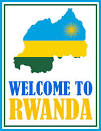This is a guest post by Dan from The Third Estate
Eastern Europe is a land of myths and legends. I don’t mean the sorts of myths that the guide books harp on about, like how Duke Gediminas founded Vilnius after being told to in a dream in the 1320s. Rather I mean the myths of the twentieth century, the successive narratives and histories that have been imposed upon the region, through revolution, Fascism, Stalinism and finally the new nationalisms.
Lithuania’s history is fairly typical of these countries. An independent Duchy for centuries, it was briefly conquered by Sweden, merged with Poland, and by the mid 19th Century was incorporated into the Russian Empire. Following the October Revolution and the Brest-Litovsk Treaty it became occupied by Germany, and in 1918 became an independent state following the end of the first World War. Throughout the 20s and 30s it quarrelled with Poland over control of Vilnius, before in 1940 it became the victim of the Hitler-Stalin Pact, and the Red Army rolled in. In 1941 Hitler invaded the Soviet Union, and the German Army marched quickly through it, into Russia. In 1944 the victorious Red Army marched back in. In 1945 Lithuania became the Lithuanian Soviet Socialist Republic (LSSR), and was incorporated into the the USSR. In 1991, in the death throes of the Soviet Union, Lithuania, and the other Baltic States, became independent again.
Throughout this period many different myths were created. The myth of the Workers’ State and the fabulous development it promised, the myth of the proud ethnic Lithuanians against the degenerate Jews and Gypsies or the cunning Russian occupiers, the myth of the salvation of the free market from state planned paralysis, and many others. But what is of particular interest, and particular concern, is the creation of the post 1991 national myth. If the stories the country’s museums tell is anything to go by, there is a deeply problematic story being told.

Memorial to Victims of ‘Communism, Collaborators and the Red Army’
The ‘Museum of Genocide Victims’ in Vilnius is a clear example of it. This is a museum housed in a former KGB building, which offers an account of the history of the period 1940-91 which is as exaggerated as it is incomplete. For a start you would expect something called the ‘Museum of Genocide Victims’ to have something to say about Genocide; but there is nothing. The museum’s story begins in 1939, has a brief gap from 41-44, and starts again in 1944. During this period, 300,000 Lithuanians, 200,000 of them Jews, were executed by death squads or in camps. This accounted for 94% of Lithuania’s Jewish population. These figures are acknowledged, but despite the fact that they dwarf the numbers imprisoned, executed or deported by the KGB the story of the holocaust in that country is not told.
Instead there is room after room dedicated to telling the story of the repression under the USSR. Now, there was genuine repression under this regime. There was suppression of the national culture and religion, and intrusion into all sorts of aspects of people’s lives. However this begins to border on the ridiculous. The KGB had prisons! They recorded people’s conversations! They were organised hierarchically! The level of hysteria around the sorts of operations actually carried out by almost all security services creates a lot of heat but very little light on the real history.
Possibly the most objectionable bit is the section dedicated to celebrating the national resistance to the Soviet Occupation in the years immediately after the war. Again, I should stress, the creation of the LSSR and its incorporation into the USSR was not a glorious democratic process. It was a combination of sham elections and military occupation, and the people of Lithuania had every right to resist it. However, as the exhibition admits entirely without comment, most of these national heroes of the resistance had only a year earlier been fighting on the Nazi side. Much of the Lithuanian army, that took up arms against the Soviets as they invaded, had been happily collaborating with the Nazis as they executed hundreds of thousands. As you walk round you get a queasy feeling as the museum informs you that the literature of these national heroes emphasised ‘national culture and spirit’. It’s pretty clear that whilst many brave people joined this resistance, its core was fascist.
A more uplifting section is dedicated to the popular uprising which eventually won independence from the USSR. This was a genuine popular movement, including an extraordinary demonstration where people held hands from Vilnius to Tallin (602km). But it seems that those who ended up in power after these demonstrations set about creating a national myth based on anti-Russian hysteria and a blind spot for fascism. As we see fascist parties on the rise across the region, this kind of national myth can’t help.



